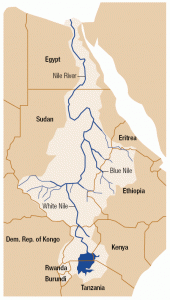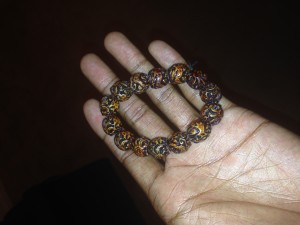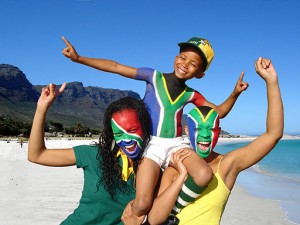Africa is the richest in natural resources continent in the world. Since the colonization period ended, African countries gradually become to be known as the next super-powered countries. Surviving from the British colonial, Nigeria now becomes one of the most powerful country in the Africa. Although there are some political problems, Nigeria has the massive of resources that could make it a great and wealthy country if there is a good administration on those national assets. Nigeria is also listed in the Next Eleven (N-11), among those high-potential economic countries. Furthermore, Nigeria has many cultural resources and places that help growing the tourism revenues, and its economy.
Nigeria is the most populous country in Africa. It locates near Gulf of Guinea, and its neighbors are Benin, Niger, Cameroon, and Chad. Nigeria has long and interesting history. The first group of people that habit Nigeria was Nok (500 BC.) Then Kanuri, Hausa, and Fulani gradually migrated to the land of Nigeria. Islam religion was first introduced to the Nigeria in the 13th century. It was Fulani that ruled the region until British seized control by 1886 and become the colonial. On 1960, Nigeria got independence and join the United Nations as a member of the commonwealth nations. After that, there are many conflicts between ethnic groups, military coups. Somehow, Nigeria is now free and on its way to the greatness.
Nigeria is affected by 4 climate types and most of it are tropics. Tropical rainforest in the southern area contributes natural abundance for Nigeria. You can see many forests in that area. Tropical savanna in the western and central area of the country where it is less humid and less hot. Alpine climate in the highland parts of Nigeria offers nice scenario for tourists. Last but not least, Tropical dry in the northern part of the country. The variety of climates has been helping Nigeria’s natural abundance and economic since its history.
Nigeria has been produced great people throughout the time. There are many people that are recognized by the world populace, and some are the role models that later generations use. Hakeem Olajuwon is a great basketball player that is recognized by the world of sports. Fela Kuti who used music to encourage and increase consciousness to the society. It was the peaceful action to against the corrupted state and should be a model for the modern day political reforms. There are also many great scientists that are Nigerian. Nigerian people has the potential to drive the country and the world.
Since the great amount of Ebola-related news come out, almost every people in the world is in panic. Most of them think that every African countries has stained with dead virus. But in reality, it isn’t. According to the WHO (World Health Organization,) Nigeria is free of Ebola. Outside people use stereotype to judge sanitation in African countries for a very long time. The stereotype is also a barrier of African economic growth. Because tourists may think that African country (in this case, Nigeria) has poor sanitation and afraid to come to Africa. No one wants to be nasty just because what he/she is born.
In the vision of people outside, Nigeria and other African countries are not developed and has poor administration. But in the reality, these countries have potentials that can keep up with other super-powered countries in the world. It is stereotype that keep them (African countries) under the condition that slow down the countries’ development; for example, African’s Ebola administration that affect the tourism growth. If the ignorance are reduced, African countries (not only Nigeria) will rise as the new and shine super-powered countries, and greatly help the current world struggles.
(This is part of the Blog Assignment #6.)




















